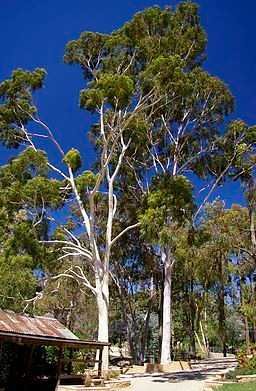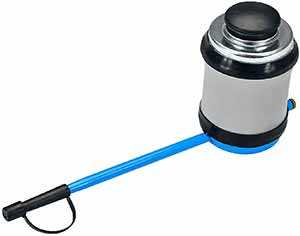Natural Pest Control Methods
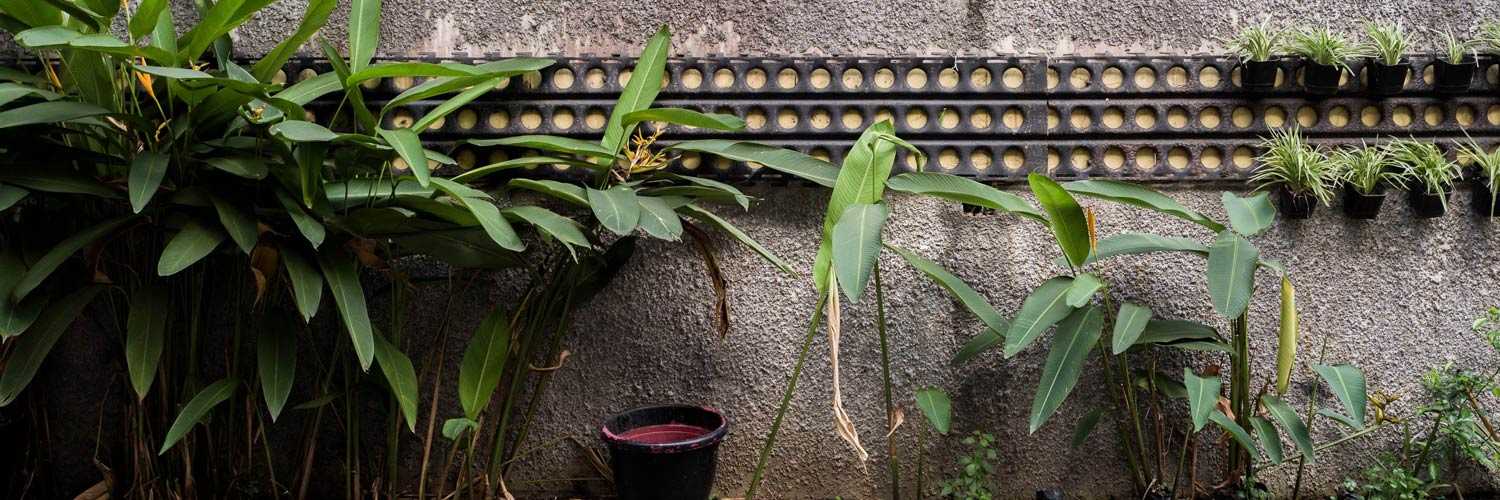
Pest control is usually one of those chores that we put off until the last minute. Dealing with mice, ants, ticks, gnats, or any of the other pests that roam our home and yards is never a pleasant task. When you finally need to address the mouse stealing dog food or the cloud of gnats around your picnic then you still have to decide what product to use. Should you grab the traditional chemical laden spray or use natural pest control methods?
In light of the constant debate over which chemicals will help or harm us many people have opted to use natural pest control methods. Most of these ideas have been around for many years and have an excellent safety record. Lets consider a few research backed, natural pest control methods to reduce pests indoors and out.
Natural Pest Control Products
Getting rid of fleas, ticks, and other pests can be easy when you have the right products. Two of my favorite products are diatomaceous earth and cedarcide. I usually keep both in the garage. Pick up some today on Amazon so your ready to fight pests!
Use Essential Oils for Natural Pest Control
A quick search of essential oils could have you believing they will eliminate all pests from your life. However using essential oils for natural pest control is not a one size fits all or one step process. For starters there are MANY types of oils, each of which has different effects on different pests. Thankfully there is research on a few oils that are proven to be effective pest repellents.
In the past few years researchers have identified several essential oils that have the ability to repel mice and at times even kill insects. Below are some scientifically proven natural pest repellents. CAUTION! Do not use essential oils on cats. Carefully consider the linked research before using and do not apply them to children under 2 years old.
- Lemon Eucalyptus Oil from the Lemon Eucalyptus tree found in northeastern Australia. Used in many over the counter bug repellents and sprays. It works by masking the chemicals such as carbon dioxide from breathing and lactic acid in sweat that insects usually use to find people to bite. There is also research indicating that eucalyptus could be used as a natural mouse repellent. You can find additional information on Lemon Eucalyptus at cdc.gov.
- Geranium Oil has been used for thousands of years by many cultures such as the Egyptians to promote healthy skin along with improved physical, mental, and emotional health. More recently it has also been found to be an effective insect repellent. the study cited below tested 10 different types of geranium oils and found them to be effective tick repellents. You can find additional information on geranium oil at ars.usda.gov

- Cedarwood Oil is extracted from various species of cedar trees. Cedar oil is often used for its anti-inflammatory, sedative and insecticidal properties. In the study referenced below researchers found cedarwood oil to be an effective repellent for ants and ticks. In addition it was found to kill Black-legged tick nymphs. You can find additional information on Cedarwood Oil at Oxford Academic
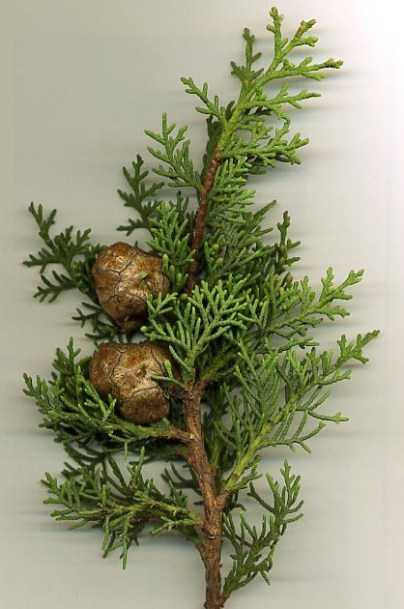
Mixed Signals
Citronella Oil and Garlic Oil are often recommended for natural pest control. However there are mixed reviews on each. Due to their popularity they are included in this list. Consider the cited references and make your own decision.
- Citronella Oil is extracted from the Cymbopogon nardus plant, also known as Citronella Grass. Citronella Oil is one of the most common natural insect repellents in the United States, however its effectiveness is questionable.
- Garlic Oil is regularly mentioned for controlling and repellent everything from rats to roaches. There is some research demonstrating the positive effects of garlic oil as a repellent however conflicting research exists claiming its not effective. Please review the research and decide for yourself. Evidence for Garlic Oil and against Garlic Oil.
Now that we know what oils to use check out our article on how to make DIY bug repellent.
Diatomaceous Earth for Natural Pest Control
Diatomaceous earth is an abrasive white power containing the fossilized remains of dead microorganisms. Due to its abrasive nature its often used for pest control. Diatomaceous earth is able to kill insects (and most arthropods) by scratching open the insects exoskeleton and dehydrating them.
Since diatomaceous earth kills insects by scratching their exoskeleton and drying them out it has a huge advantage over traditional pest control chemicals. Insects will not build up a tolerance for Diatomaceous earth. The Diatomaceous earth you use this year will kill insects just as well as the Diatomaceous earth you used last year.
One down side to Diatomaceous earth is that it needs to stay dry to work. Even morning dew can stop Diatomaceous earth from working. This means you will need to reapply it frequently if used outdoors. Another word of caution on Diatomaceous earth is to be careful what insects you inadvertently target. Simply spreading Diatomaceous on your lawn could also impact bees and lady bugs which you don’t want to kill. Diatomaceous earth will kill anything with an exoskeleton that comes in contact with it.
Diatomaceous earth is one of the few pest control methods that’s also edible. Many people mix Diatomaceous earth with their morning orange juice. They believe Diatomaceous will fight parasites and cleanse your colon. Unfortunately there is scant scientific evidence for medical use of Diatomaceous earth. Whether Diatomaceous earth kills parasites or not, we do know its safe to eat which makes it safe to use around the house.
When using Diatomaceous earth buy food grade Diatomaceous earth or a diatomaceous earth product labeled for pest control. There is also pool grade Diatomaceous earth that contains crystalline silica which makes it carcinogenic. When spreading diatomaceous earth be careful not to create dust or breathe it in as the fine particles can become lodged in your lungs. Be especially careful if using diatomaceous earth near kids or pets as they can run through it and disturb the dust.
To apply diatomaceous earth indoors sprinkle it around the base boards and in your carpet if needed. You will want to target areas where you know insects will crawl. Its best to do this at a time when the home will be unoccupied so the bugs have time to crawl through it.
How you clean up diatomaceous earth depends on where you sprinkled it. If you dusted it on a hardwood or solid floor, just use a damp towel and wipe it up. When applied to carpet use a shop vac or filter less vacuum. Using a traditional vacuum to clean up diatomaceous earth can lead to a clogged filter and get into the internals of your vacuum, which would also destroy the vacuum. If you don’t have either one of these then you will need to rent a carpet cleaner to remove diatomaceous earth from your carpet.
Use Landscaping for Natural Pest Control
Bags of mulch and containers of flowers are signs of spring in most neighborhoods. Many homeowners will spend hours digging, raking, planting and pruning to create a perfectly landscaped backyard. Before investing time in your landscaping you should make sure your plans will not invite unwanted pests. Well planned landscaping can create the foundation of your natural pest control solution.
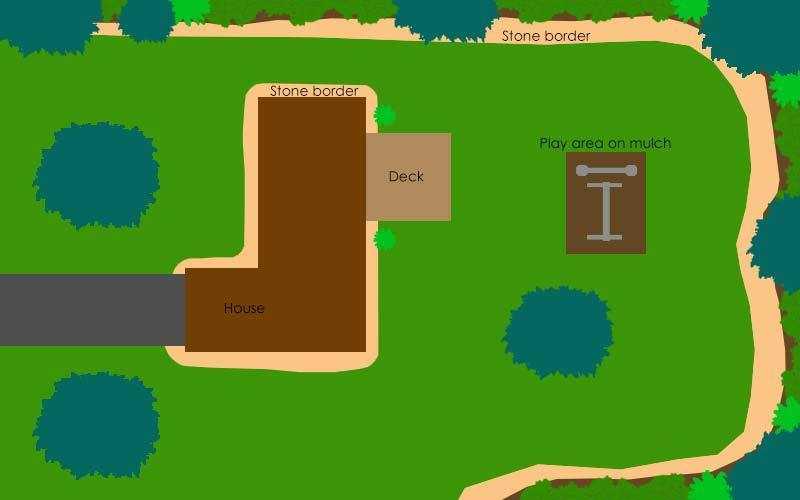
tickscaping is an effective method to control various pests.
Mulch is almost ubiquitous in American lawns. Its ability to keep down weeds appeals to most home owners. However while keeping out weeds the slowly rotting wood is also inviting insects. Pests such as centipedes and earwigs are attracted to mulch. In addition mulch can harbor fungus if its created from trees that were suffering from fungus. To avoid these issues consider using artificial mulch. Artificial mulch will last longer and helps the environment as its usually made from recycled products. Since artificial mulch does not decompose it doesn’t attract pests. Check out this link from the University of Wisconsin.
Bird feeders are another staple of many American yards. Watching birds fly around the feeder on a snowy day is both entertaining and relaxing. However the seed the birds drop could be picked up by rodents. Bird feeders often provide as much food to foraging rodents as to the birds. If you really want a bird feeder place it as far from you home as possible.
Using the right plants in the right location is another form of natural pest control. There are many plants that will actually repel insects. A few of these are:
- Lantana is a type of perennial flowering plant native to tropical regions of the Americas and Africa. Throughout the eastern and gulf coasts of the United States the Lantan is considered a dangers weed due to its poisonous leaves. However Lantanas are known to attract birds and butterflies and are thus well suited for butterfly gardens.
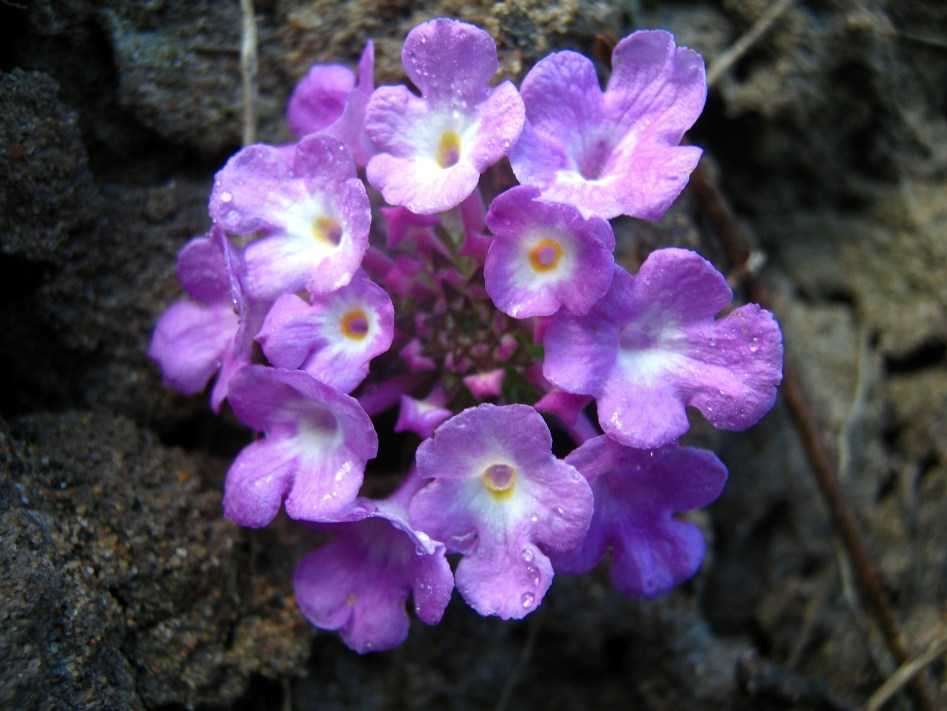
The flowers of Lantana montevidensis.
- Fever Tea (also known locally as the Lemon Bush ) is native to south Africa. It grows us to 6 feet tall and is used throughout Africa for medical purposes and to repel insects. Further evidence of the insect repellent properties of the Fever Tea plant can be seen in a 2010 patient awarded to the South African government for Fever Tea extract. Studies on this process and extract have found it to be as effective as DEET. Additional information on Fever Tea can be found at botanicalsociety.org
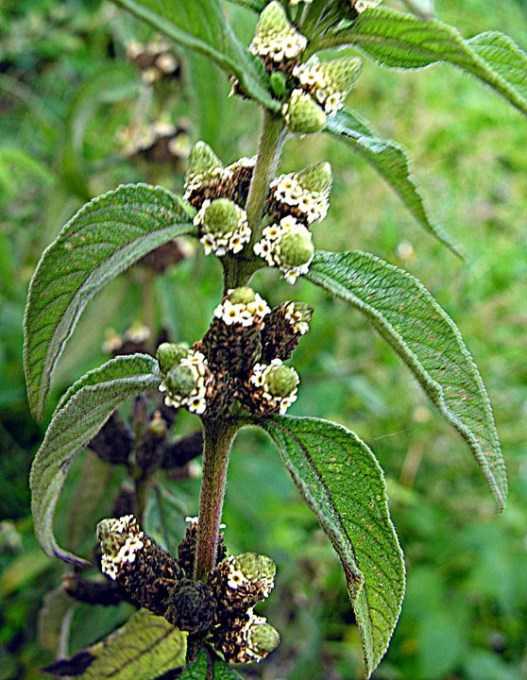
Lippia javanica Fever Tea.
- Lime Basil is native to tropical regions of Africa and Asia. Thanks to its appealing flavor and medical uses its now found in herb gardens around the world. There are over 35 different varieties of basil. In addition to repelling insects basil to known to be anti-inflammatory, fight cancer, contain antibacterial properties, help fight viruses, and is an adaptation.
There are also plants to avoid or at least carefully place in your landscaping. This is especially true immediately surrounding your home. Plants that come in direct contact with our home can create a bug bridge giving pests direct access to your house. Its best to keep all plants, shrubs, and trees several feet from your home.
Ground cover should also be used sparingly. Ground cover does exactly what its name implies, it covers bugs. The thick blanket that pachysandra and ivory creates to prevent erosion and keep out weeds also keeps in pests. Most insects and rodents like cool, shady, humid places which they find under ground cover. Ground cover can be used, just keep it away from your house.
Predators for Natural Pest Control
When thinking of insect predators the praying mantis is likely the most infamous. Its able to eat anything from a bee to humming bird (yes it really can catch and eat a humming bird!). What makes the pray mantis great for pest control is that you can purchase praying mantis egg sacks. Once the eggs hatch you can have dozens of baby praying mantises hunting in your backyard.
Another great option for predator based natural pest control is the humble chicken. Most backyard farmers initially purchase chickens for eggs but soon discover their appetite for pests. Chickens are omnivores meaning they eat almost anything they find. This includes, bugs, fruit, seeds, vegetables, worms, small lizard and even mice.

Try chickens for natural pest control
If you decide to give chickens a try remember they find food by scratching. If left unchecked chickens could destroy a garden or flower bed. To prevent this limit their range by fencing in the garden or placing the chickens in a mobile chicken coop. Using a mobile chicken coop you can rotate the chickens around your property and prevent excessive scratching.
Another bird known for its pest eating abilities is the Guinea Hen. Guinea Hens have a diet similar to chickens, they eat anything that fits in their beak. This includes most insects. The advantage of Guinea Hens is they do not scratch and dig up the yard as much as chickens. However Guinea Hens are a bit more wild then chickens and tend to roam. So if you have LOTS of room then Guinea Hens could be the answer to your pest problems.
Two of the most common pest predators are already welcome residents in many family. Cats and Dogs have been scientifically proven to help reduce pests. Cats can literally scare away pests. Researchers discovered that mice can detect compounds in cat saliva that triggers a fear response. This behavior was tracked down to a specific region of the mouses brain. When researchers disabled this region of the mouses brain the mouse became unafraid of predators.
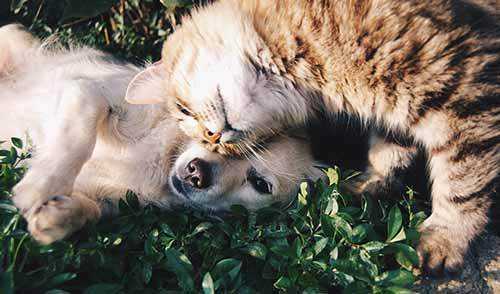
team up dogs and cats for natural pest control
To increase your cats ability to naturally repel mice try teaming them up with a dog. In spite of being arch enemies the combination of cats and dogs has been found to reduce the amount of rodents around homes and storage buildings. This was the result of researchers studying three groups of homes. Group one had just cats, group two had just dogs, and group three had a combination of dogs and cats.
Researchers discovered the combination of cats and dogs significantly reduced rodent activity. The lead researcher stated “Showing that dogs have a role in rodent management has overturned my long held ideas on this subject. Now all we need to do is to find out why and how the combination of cats and dogs drastically reduces rodent activity in and around homesteads.”
Check out our full article on what eats ticks!
Clean Up for Natural Pest Control
The most environmentally friendly natural pest control idea is also the most basic, cleaning. Clean up and eat your vegetables are popular phrases in many families. Just as eating your vegetables has multiple benefits so does cleaning.
Pests often seek out small dark places to hide. These nooks and crannies provide shelter and conceal pests from predators. This is exactly why insects and rodents are usually found in burrows, under rocks, in ground cover, and anything else they can crawl under. Remembering what pests like also tells us what they do not like. This means if pests are are looking for lawn debris to provide cover then a clean and tidy yard will help with natural pest control.
One way to achieve this is to make your yard increasingly manicured the closer you get to the house. To put this into practice you could use natural or artificial mulch to border brush or wooded areas. Keep wood piles and compost piles between the mulch and wooded areas. The lawn beyond the mulch should have as much sunlight as possible and be clear of leaves, branches, and anything else insects or rodents could hide under. Try using stone or gravel as a border Between the lawn and house. This will deter pests and keep weeds down. While at the border of the house its also import to look for cracks and openings that pests can use to enter the house. Remember that insects and rodents don’t need a large hole. A dime size hole or crack is all mice and insects need to invade your home. If you do find a opening seal it with something mice can not chew through. Concrete and steel wool are two good options.
Trash cans are another item to keep clean. Along with keeping the cans clean make sure they don’t have holes that pests can crawl into. Both the trash bags and cans should have a firm seal to keep out insects and rodents
Clearing clutter and cleaning is just as effective for natural pest control indoors as outdoors. If pests do make it indoors they will seek food water and shelter. A routine cleaning schedule will ensure crumbs and spills are cleared up and help you find potential hiding spots. Just as important as regular household cleaning is cleaning pet areas. Pet bedding can provide pests, particularly fleas and ticks a perfect home. To prevent pest from taking up residence with your pets wash pet bedding at least once a week.
Keeping a clean and tidy house is now proven to accomplish more then just impressing guests. According to recent research it will actually reduce the number of pests. A recent study by Ohio State University researchers determined that vacuuming can help prevent flea infestations. After researchers vacuumed up 100 fleas from a carpeted area, ninety-six percent of the fleas were found dead in the vacuum. You can read the full study here livescience.com.
Natural Pest Traps
Keeping pests out of the house with natural repellents is always the best option. However at times they still make it in. When this happens you need to get them out with an effective natural trap. Below are a few traps that will help with natural pest control.
Some of the most persistent pests are gnats and fruit flies. These pests have the ability to invade your home from fresh produce year round. The most frequently recommended fruit fly trap is placing rotten produce in a jar, seal the jar with plastic wrap, then poke a few holes in the plastic wrap. The idea is the fly will make its way into the jar but not be able to get back out. While this seems logical, its not always effective.
A fruit fly trap that does seem effective is the bowl in bowl trap. To make this trap first fill a large bowl with soapy water. Next float a smaller bowl or shallow cup with wine or fruit juice in the larger bowl. What makes this trap effective is the two zones of liquid. If the fly doesn’t land and drown in the center sweet smelling bowl they can still be caught by the outer ring.
If your dealing with crawling insects you can make a simple DIY glue trap. All you need for the DIY glue trap is water, corn syrup, a pot, a stove and scraps of cardboard. First add a quart of water to the pot and bring it to a boil. Then add in a quart of corn syrup and mix until you have a nice pasty solution. Remove the the pot from the stove and allow to cool a bit. While the paste is still warm use a spoon to spread it on the scraps of cardboard. You may want to coat the spoon with liquid soap to prevent the past from sticking to it. Once everything cools off lay the pasty cardboard scraps along the base boards and wait. Just be careful to keep kids and pets away!
Trapping rodents that made it indoors usually involves the traditional snap trap. However these traps are several drawback. Besides being a danger to kids, pets and your fingers they don’t allow for catch and release. To solve these issues try a plank trap.The plank mouse trap is one of the simplest and safest options for mice and rats.
Check out our full article on DIY mouse Traps!
Natural Pesticides There are various botanical pesticides that can be used for natural pest control. Two of the most effective an popular ones are borax and pryethrum. Borax is well known and has been around for years. However pryethrum may not be as well known but is also been in use for hundreds of years. Lets first dig into Borax.
Boric Acid is made from naturally occurring colorless crystals that can be found around the world. One of the more popular brands is 20 Mule Team. 20 Mule Team borax is named after the teams of mules used to haul borax out the California desert when it was discovered in the eight-teen hundreds.
Borax is an excellent option for natural pest control, particularly with ants. Borax kill insects after they eat it by interfering with their digestive and nervous system. It can also kill insects by scratching their exoskeleton and drying them out similar to diatomaceous earth.
To make a borax ant trap you will need 1 cup sugar, 1 Table Spoon borax, 1/2 cup boiling water, and plastic lids. Combine the borax, sugar and water in a pot. Bring the mixture to a boil and stir until well mixed. After allowing the mix to cool pour some in each lid. Place the lids where you see the ants. Its important to remember that borax kills ants by interfering with their digestion. This means it will take several days for you to notice a drop in the local ant population.
Another popular and natural pesticide is Pyrethrum. Pyrethrum is made made from dried and crushed Chrysanthemum flowers. When used correctly pyrethrum paralyzes insects but is not toxic to humans. The insecticidal effects of dried and crushed Chrysanthemums were discovered Centries ago in central Asia. In the eight-teen hundreds pyrethrum began to be sold in Europe as ‘Insect Powder’ to control cockroaches, bedbugs, fleas, moths, flies, gnats, lice, and other household pests.
When searching for pyrethrum based products you will likely also encounter permethrin. Permethrin is a synthetic pesticide with a chemical structure based on pyrethrum. Even though permethrin chemically resembles pyrethrum it is not considered a natural pest control option.
Nematodes for Natural Pest Control
Nematodes are microscopic soil dwelling unsegmented round worms. Even though they look like tiny versions of earth worms they are different. Nematodes are among the most numerous multi-celled organisms on earth. There are thousands of species of nematodes, from the tundra to the tropics, they occupy almost every corner of our planet. Nematodes diet depends on the species, and can range from bacteria, plants, animals, and insects. Since nematodes are a naturally occurring organism they are perfect for natural pest control.
Over the past 50 years two species of nematodes have been studied for natural pest control. The species of interest are steinernema and heterorhabditis. Dispite their size these nematodes are able to move through soil following carbon dioxide to attack unsuspecting insects. Upon finding an insect nematodes enter the insects body through any opening in the excoskelton. Once inside the insect the nematode releases bacteria that kills the insect from blood poising in a few days. The nematodes then eats the dead insect.
There is some debate about exactly what insects can be effectively controlled by nematodes. Many commercial products claim that nematodes can kill over 230 types of pests ranging from Japanese beetles, cut worms, wire worms, weevils, white grubs, flea larvae, to subterranean termites. The challenge is that insects killed in laboratory environments many not be as easily attacked by nematodes in the wild.
Beneficial nematodes for natural pest control can be purchased in most home and garden stores as well as Amazon. Some of the more popular brands are BioSafe, BioVector, Scanmask, Exhibit, Oti-Nem, and Guardian. When purchasing nematodes remember these are living organisms so extra care is needed. There will usually be specific instructions on the handling, storage and application of nematodes that must be followed to ensure an effective application.
Fungus for Natural Pest Control
For most of people the word fungus conjures up thoughts of moldy cheese, mushrooms in their backyard or on a crisp salad. However the weird world of fungus goes way beyond old cheese and mushrooms. Fungus is actually neither a plant nor an animal. Scientifically speaking its in a kingdom called Fungi. There are over one-hundred forty thousand species of fungus. In the vast array of fungus species there are several that are used for natural pest control.
The species Beauveria bassiana and Metarhizium have been extensively studied for natural pest control. Fungus from the Metarhizium species has actually been studies since the 1800s. Both species can be found in the soil throughout the world. In their natural state these fungus species can infect flies, aphids, caterpillars, weevils, grasshoppers, ants, and beetles. Insects become infected by coming in contact with fungus spores.
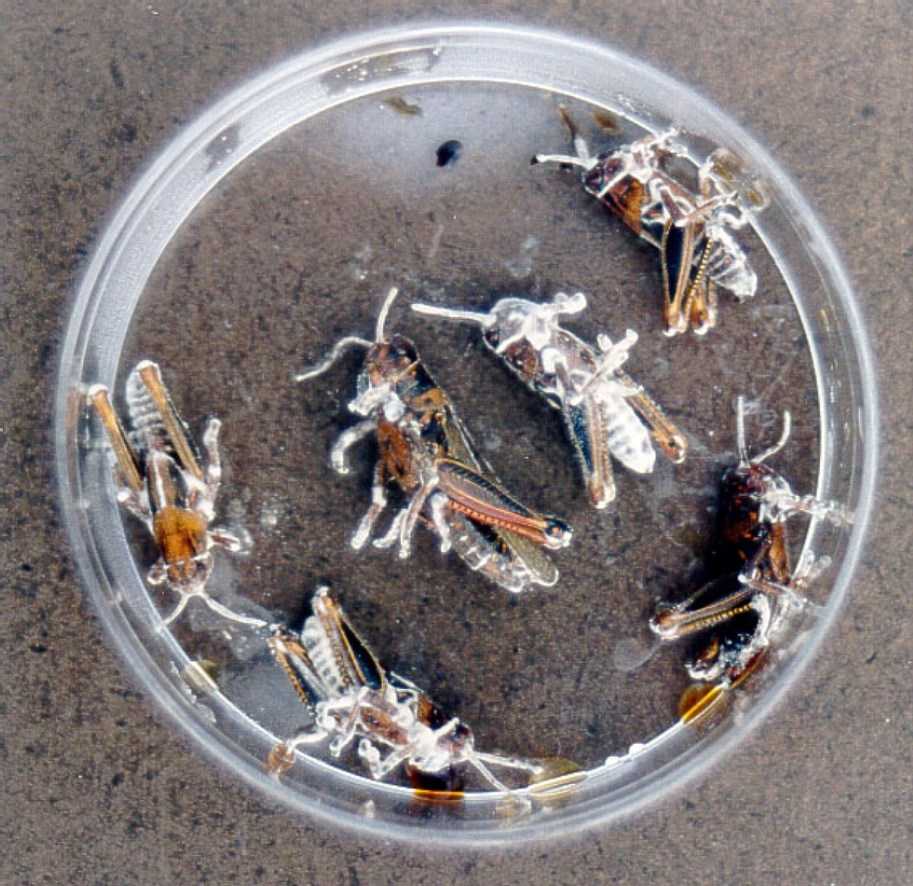
Grasshoppers killed by the fungus Beauveria bassiana.
The fungus germinates when it comes into contact with the insects cuticle. The cuticle is like a waxy skin that covers the insects exoskeleton. Once germinated on the cuticle fungus makes its way inside the insect, growing throughout the insect’s body. The fungus produces toxins and drains the insect of nutrients, eventually killing it. Once the insect is killed, the fungus grows back out of the insect, covering it in what looks like fuzz. Once the fungus covers the outside of the insect, spores will spread to the surrounding area. This allows the fungus to then kill additional insects.
While fungus seems very promising for natural pest control there are a few drawbacks. Products containing fungus should usually be applied in humid or moist conditions. This makes pest control via fungus not suitable in arid locations. Fungus is also light sensitive and will die in prolonged direct sunlight. However if you are able to work around these conditions then fungus could be a good choice for natural pest control.
Learn how to effectively “apply diatomaceous earth indoors“? or What Smell Repel Cockroaches or “Whats the Best Under the Hood Rodent Repeller“?


